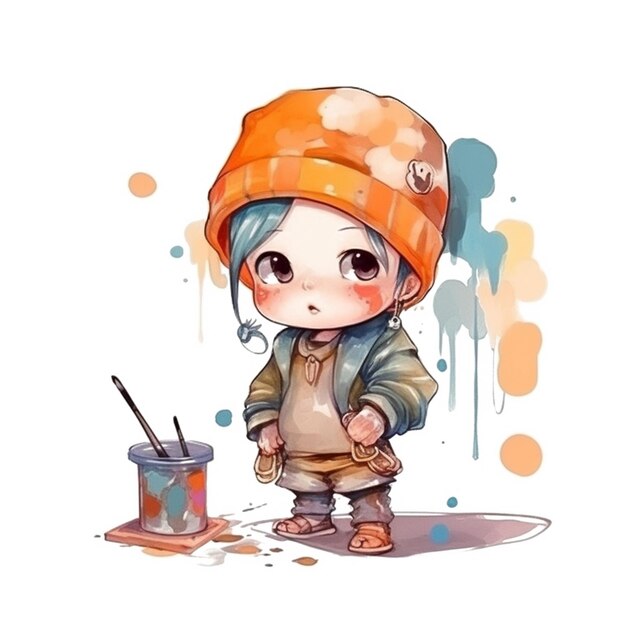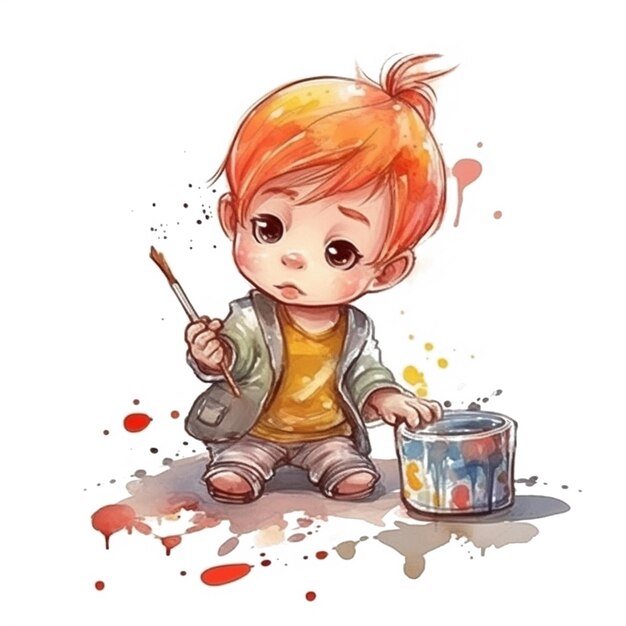How to Find Your Artist Ancestors
Who Inspires You?
As artists, we almost have this innate attraction to our craft, to our need to create. And, we all have something or someone that has fueled this passion. For many artists, the works of others steer the way they approach their own art. Annie O’Brien Gonzales, author of Bold, Expressive Painting refers to these influencers as our Artist Ancestors.
Below is an excerpt from Gonzales’ new book, The Joy of Acrylic Painting. In this inside look, she shares how to learn from your Artist Ancestors and also walks us through a fun, step-by-step demonstration inspired by one of her own artist influencers, Henri Matisse. Enjoy!
Finding Your Artist Ancestors
Every artist has individual tastes in artists they find inspirational. For example, the works of three very different artists — David Hockney, Henri Matisse and Georgia O’Keeffe — make my heart race for very different reasons. There are many others, even renowned artists, who leave me absolutely cold. I’m sure you are the same.
Artists who resonate with us are what I call our Artist Ancestors. I believe it’s useful in our development as artists to think about why. Most of us know intuitively which artists they are when we see their work. Pay attention to that signal so you can take the next step.
To learn from the work of an Artist Ancestor you love, apply the analytical part of your brain to analyze what it is that makes his or her work so appealing and whether you can apply that to your own work. When you combine elements from your Artist Ancestors with your own interpretation, you are creating your own painting style.
From Inspiration to Canvas
All artists are an amalgam of inspiration from other artists and innovations of their own. Once you have analyzed the elements that you want to incorporate in your own work, you can move from imitation to innovation using those elements.
Study your Artist Ancestors, learn from them and take away ideas to incorporate into your work. How can you include some of their ideas in your own work? And what about copying? Is it a bad thing? It is a fact that all artists through time have learned from other artists. The trick is to take what you learn and make it your own.
If you have an art sketchbook, brainstorm a list of three to five artists who consistently attract your attention. For each Artist Ancestor, create a full page in your sketchbook with the artist’s name at the top of the page and attach a reproduction of one of your favorite pieces of that artist’s work.
Study the work and jot down what you find most appealing about the work. Some questions to ask yourself might be:
- How do you feel about the artist’s use of the Elements of Art: line, shape, color, value, texture?
- Is the subject matter something that would interest you?
- Is there a unique composition you might employ?
Repeat this process for each artist on a new page in your art sketchbook. Collect all of the elements that bubbled up in your analysis of your Artist Ancestors onto one page, and see which ones keep recurring and how you might try these ideas out in your own work. This will give you insight into your particular painting style and a direction for future work. Now, let’s have some fun.
Paint Like Your Artist Ancestor
This project is designed to give you a chance to try out the techniques of your favorite artist in your own work. For this demonstration, I painted in the style of Matisse, a master expressionist painter. I love his work and gravitate to many of the elements including the warm colors and loose brushstrokes.
For your project, choose a painting from one of your Artist Ancestors, define the elements of his or her work and then paint using that approach. You will learn a lot and will be able to consciously decide whether that approach will work for you.
Analyze the style of the painting you are using as your inspiration and record your thoughts in your sketchbook, similar to my example for this project:
- Line:extensive use of black lines to outline and define objects as well as create lines of movement directing the eye to the focal point
- Shape:expressive nonrealistic shapes of objects; shapes continue off the picture plane (table, drapery, window); combination of organic and geometric shapes
- Color:expressive, nonrealistic colors; predominantly warm palette
- Value:use of strong dark/light contrast
- Texture:tactile texture; strong, vigorous, loose brushstrokes; visual texture through use of pattern
- Other:mood is overall cheerful
What you will need to complete this tutorial:
- High-quality acrylic paint
- Canvas or panel, 11 by 14 inches (28 by 36 cm) or larger
- A copy of your Artist Ancestor’s painting, and your notes about their style
- Paintbrushes, synthetic or bristle; bright shape
- ; ¼ inches, ½ inches, 1 inch (6 mm, 13 mm, 25 mm); plus a small round
1. Evaluating Your Artist’s Style
Select an Artist Ancestor who inspires you. What piece of work makes you swoon? I chose Henri Matisse’s painting Table with Fruit.
Assess his or her use of the five elements of painting: line, shape, color, value and texture. Then review the design principles emphasized by that artist and how these play a part in his or her work.
2. Choosing Your Color Palette
Create a color palette using your inspiration painting as a reference. Make sure to keep this reference close by.
3. Starting Your Sketch (or Underpainting)
You can decide to copy the composition of the inspiration painting or select your own subject matter to be painted in the color palette and style of your Artist Ancestor.
After studying Matisse’s work, I sketched my composition onto the canvas without an underpainting because I had noticed he sometimes let the white canvas show in places.
4. Determining Your Painting Style
For Matisse’s style, I chose to paint outlines of the subject matter with black paint and a small round brush.





